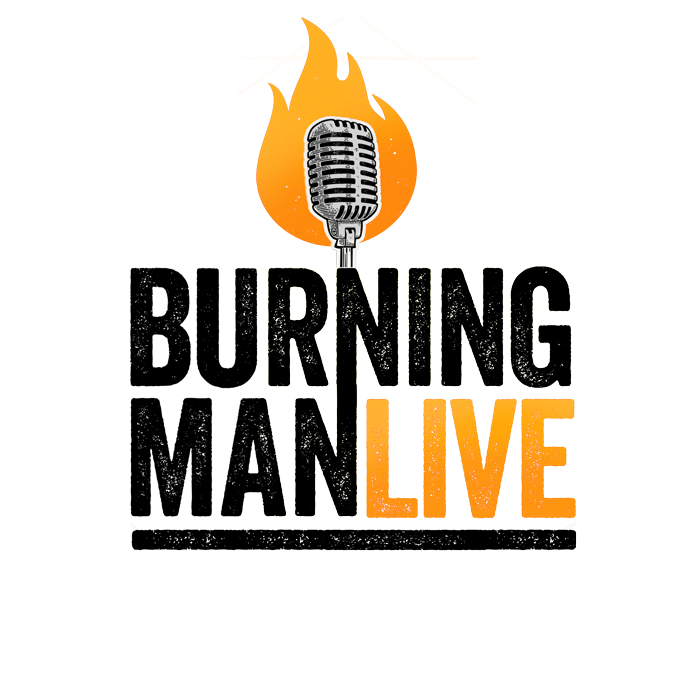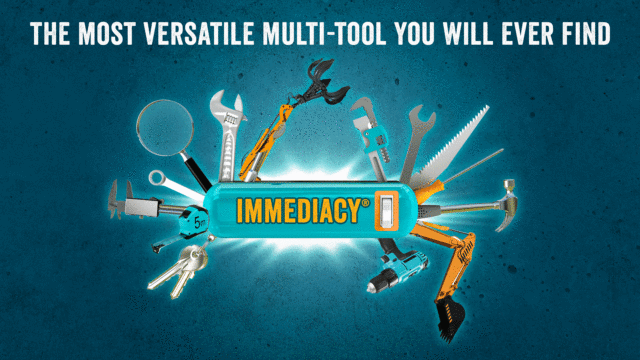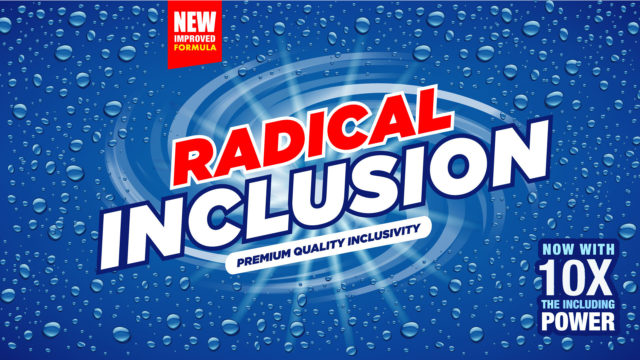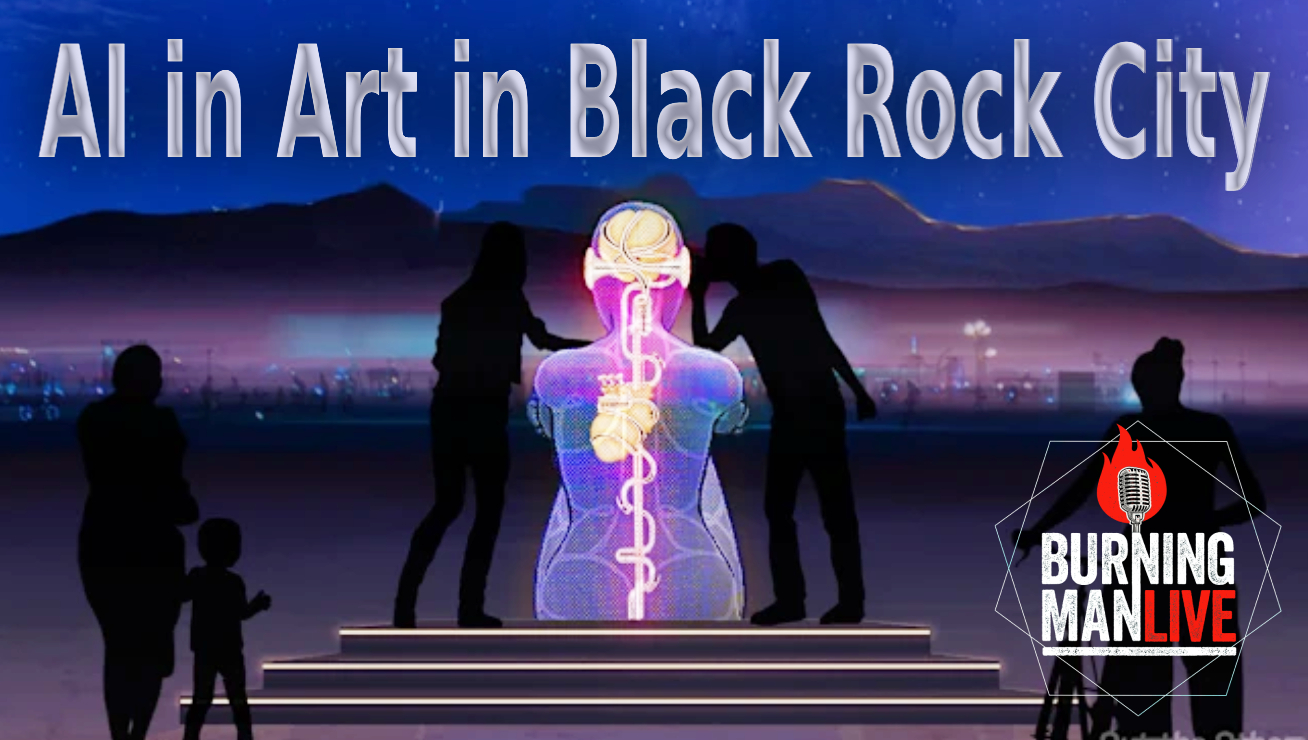
AI in Art in Black Rock City
AI is a context changer, a shaker upper, and a force multiplier to what our human minds can do.
Andie says that AI is a major philosophical shift in humanity, and when this kind of thing happens, the first people she goes to are artists and academics.
Andie and Stuart talked with a few artists and academics about their AI infused art coming to Black Rock City. They share their dreams and nightmares, and how to ‘go beyond.’
· Chad Elish — Verse-O-Matic
· Kate Greenberg, Deva Temple, Eric Vicenti — “Out the Other“
· Dr Jukka-Pekka Heikkilä, Kiana Kaiser, Michael Zeltner — Burning Stories & Burner AI
This is transforming personal stories, creating unique dialogues between humans and the machines that reflect us, the good, the bad, and the ugly… and the beautiful… and the surprising.
Here is how artists conjure creativity and empathy using AI at Burning Man, a home for art to push against and learn from.
Burning Man LIVE: Dr Heikkilä and the Science of Participatory Culture
Transcript
ANDIE:
Hello.
STUART:
Hello. Hey, everybody. It’s Burning Man LIVE. I’m Stuart Mangrum. I’m here with Actiongrl, Andie Grace.
ANDIE:
Hi, Stuart.
STUART:
Or am I? Because this could absolutely be a deep fake, couldn’t it? You don’t know if we’re here or not.
ANDIE:
Is it really me? Great question.
STUART:
AI generated podcasts are cheaper than a dime a dozen. I think you can buy them by the gross now.
ANDIE:
It’s kind of gross, isn’t it?!
I know that the day is coming when it will be indistinguishable, but at this point for me, I find myself drawn toward more human creations and pushed away a little bit, repulsed by, perhaps, some of those that are very obvious when you see them.
STUART:
Someone should be recording this…
ANDIE:
It’s kind of the big chunky stuff about humanity right now, to be honest with you. It’s safe to say that all of this is philosophically a major shift for humanity. We know this, and yet we talk about it a lot in terms of how the average human is going to interact with it. And what I loved about these conversations was that when something like that happens, I think the first people I’m going to go to are the artists and the academics, and in this case, the Burners.
I want to hear what people in this community have to say about how these tools can be applied to thinking about the bigger, bigger questions. You interviewed Kevin Kelly recently and talked about protopia, sort of iterating toward at least the betterest version of ourselves that we could. And like I said, these are the people that I would want to listen to when I ask that question.
STUART:
Cool. Kevin and I talked about Skynet, too, though, just to be clear.
ANDIE:
A fair point.
SARAH CONNOR:
I need to know how Skynet gets built.
THE TERMINATOR:
Human decisions are removed from strategic defense. Skynet begins to learn at a geometric rate. It becomes self-aware. In a panic, they try to pull the plug.
SARAH CONNOR:
Skynet fights back.
THE TERMINATOR:
Yes.
STUART:
AI is such a broad thing, you know, it’s capable of triggering every possible emotion in every possible segment of the population, right? Whether it’s the greed and all the AI ‘get rich quick’ schemes, or whether it’s the fear of falling behind.
ANDIE:
Right. And then your next friend is telling you how much it’s stealing from their way of life, and their meaning making, and their living.
STUART:
Oh, my God, that’s real.
It’s funny, even within the artist community, it’s super divisive, right? I have filmmaker friends who, when that latest Google video AI came out, they’re just like, “I’m done. No one’s ever going to hire me again. My career is over.”
ANDIE:
I’ve had that nightmare, for myself and a lot of my friends. All the ways that we can look at these things and think, “Is this really, truly going to replace me? What about my feelings? What about what I bring to it that AI can’t bring?”
STUART:
Well, and hopefully original thinking. Because all it can do is just play with the same mess that it’s been given, and move the pieces around into different configurations.
ANDIE:
Well, which is funny because that’s how I feel about being a human as well. I feel like I’m just regurgitating things that I heard in different configurations. But, there’s something about the animus, about myself, that I feel interprets these things differently.
And yet I’m fascinated by all these ways that these artists are going to use that interaction between humans and their feelings, and turn it into information that can be encoded and then decoded again by other humans.
STUART:
It’s actually a really good observation, Andie. Is all art folk art? Is everything playing with the same pieces and putting them together differently? “All art is theft.” I think Picasso was the first smarty pants to say that.
ANDIE:
He probably stole it from someone else, but anyway.
STUART:
But it still seems like we get new ideas, or maybe they’re just, I don’t know… If there aren’t any new ideas, then this is the birth of a whole new era of art because AI can certainly put those pieces together faster and more combinations than you or I ever could.
ANDIE:
Yes. And then when we as humans look at that, isn’t it going to therefore influence how we create, and we do things differently? It’s going to be a force multiplier, I would imagine, to what our human minds can do.
STUART:
Well, that’s the protopian view. That’s absolutely the positivest view of this. And…
ANDIE:
I’m an optimist. What can I say?
STUART:
I am, too. I’m a cautious optimist; a skeptic, maybe, but never a cynic.
So I’m really glad that we got a chance here to speak to people who are using it rather enthusiastically, right, who really are not paying attention to the haters. They’re just like, what crazy things could we do with AI? How do we use this as a new paint brush?
ANDIE:
Exactly. A paint brush is a great phrase for it, because I’ve been thinking recently about how every person is a paint brush in Black Rock City. We think of AI art as this generative stuff that we see on signs and graphics, perhaps, but, using AI in your art to interact with humans on an emotional level — this is a fascinating environment for exactly that, because the art at Burning Man is supposed to be stuff that you come up and push against and learn from and play with, and not just observe from afar and look at.
So, I’m really excited about all of these projects.
STUART:
And if the art can actually learn from you, that is a whole nother level of interactivity, isn’t it?
ANDIE:
I’m rubbing my hands together right now. This is going to be very fun.
STUART:
Okay, so, we picked three art projects bringing their goods to Black Rock City this year, right?
ANDIE:
That’s right. The first one I think you know pretty well, the Burner AI with the Burning Stories project.
STUART:
The Burning Stories project has been in operation for years.
ANDIE:
Jukka-Pekka Heikkilä.
STUART:
Jukka-Pekka!
ANDIE:
And I met Kiana and Michael. They are members of his team from Switzerland, and we spoke about the Burning Stories project, which uses AI to collect and analyze all kinds of stories from all different Burning Man events, and then make it interactive and understandable, and also filters in a whole bunch of other stories and information and data to create a Burner AI, which is wild.
STUART:
And it looks like I also snuck in another one of my old friends into this mix: Chad Elish. He brought this machine over to my house actually, like a year ago.
ANDIE:
Oh, you’ve seen it?
STUART:
I’ve seen it. I haven’t seen the instantiation he’s going to do in Black Rock City. But the deal is he took a beautiful old big case camera and attached a little AI chip to it that takes the visual image and instead of producing a photograph, it produces a poem, based on what it sees.
ANDIE:
I really loved the way that he described it, as if he was taking a poem the way you would take a picture, and this was such a fun conversation. I imagine this, this beautiful object and the way that it captures our surroundings. Yeah, it’s something that we’ve never seen before, the Verse-O-Matic.
STUART:
I love that it’s so… it brings an element of whimsy into this. You know, so much of AI is thought to be either, you know, draconian or of questionable motives. This is just pure fun. So he decided to build a photo booth around it.
ANDIE:
Pure fun.
STUART:
And what about “Out the Other”?
ANDIE:
“Out the Other” You step onto this sculpture base and you speak into this thing’s ears, and then it processes what you said, and it responds in its own voice. It’s another way to interact with an AI, that is about enhancing emotional experiences.
There’s apparently a lot of Larry Harvey programmed in there.
STUART:
I’ve actually seen three Larry Harvey exclusive large learning models. None of them have spoken like Larry. Thank God. I don’t want to hear Larry’s voice.
ANDIE:
Right. I think most of all, I just don’t think that he would like that very much if he were here to hear it. If he were, maybe it would be different.
STUART:
Would he like any of this?
ANDIE:
That’s a good question, because he was always fascinated by this sort of thing, but in a very, not Luddite but sort of resistant way, like, “Well, that doesn’t replace human interaction.” So I think as it escalated, he probably would have remained skeptical. And yet interacting with art like this would probably blow his mind.
STUART:
Well, that is the capacity of art to interact with you in unpredictable ways, I think that would have been irresistible to Larry’s brain.
ANDIE:
Absolutely. And I mean, the fact is that some of it is really just about art interacting with data. And I do know that he loved that. There’s precedent for playing with data live in Black Rock City and using it to make art that makes you feel something. He was very, very fond of the concept of it, anyway.
STUART:
First, let’s hear from the Burning Stories team about the Burner AI. Here’s Jukka-Pekka and Kiana and Michael.
ANDIE:
We want to talk with you about Burning Stories because we’re doing a show about interactive AI art at Burning Man events. And some people see this year’s Man Base in Black Rock City as like a mini world’s fair. It’s showing off weird and strange ideas, modeling the future, and there’s all these different projects that will be there. But you have been studying Burning Man, Jukki, for more than ten years, you and your team. I wonder if you could just catch us up on the Burning Stories project.
JUKKA:
Yeah, the role of Black Rock City has been incredibly important. Time flies. It was 2017. The project group of 50 people, we officially launched Burning Stories, and aimed to collect data by a website. That proved to be fairly difficult, to ask people to write after the event, to collect the experiences, which then led us to develop the story sharing cubes that many Burners have seen in Black Rock City, also in Regional Burns. That was initially supported by The Borderland community, and also it has been with the Estonian Burning community. So it has been a very Nordic collaboration.
Now it has evolved to Burning Stories. It’s a collective of artists and scholars and techies. And most importantly, the Burning Stories project has always been a hobby, so nobody gets paid and we work on pro bono. We get plenty of support from organizations in design. And it also serves as a legitimacy to actually have a really rigorous research project studying the Burning Man Project, and the interactions with the Regionals within Aalto University together with University of Oxford.
I’m very happy to also highlight the importance of the tech-orientated people like Kiana and Michael in this podcast, that they enable the scholarly work of Burning Stories to go much further.
ANDIE:
Kiana and Michael; Kiana Kaiser and Michael Zeltner, you are in Switzerland. Tell me about your interaction with this project. Kiana, first:
KIANA:
Just a little over a year ago, I met Jukka in Estonia, and I was just starting a new job at an AI startup where we were creating new ways to experience data. He told me about his stories, and we realized that he finally had a way to showcase the stories to a community, because we both believe that stories matter a lot, and so many stories are never being heard.
Through the help of AI, we can actually create new, immersive ways where people can hear about other people’s stories. But it goes actually even beyond that.
So I’m currently a student, and studying artificial intelligence here in Switzerland, so I’ve been very familiar with the topic in the last couple of semesters. And one of the things that was quite hard to grasp was to quantify qualitative data.
Stories have context, they have text, and if you have thousands of stories, it can be quite big manual work to actually see, oh, are there any patterns between the stories? Is there something underlying, an essence, that we can actually communicate to the people to be more connected with each other?
With the use of AI, we can actually quantify that in a way where we can calculate the similarities between the stories. And that’s where the magic happens. People can actually discover similar stories. They want to maybe read a story about how somebody had a transformative change during the playa somewhere in the morning, and want to actually dig deeper into that and see, oh, there’s another person having the same experience. And I happen to have the same. So it is quite beautiful how, with the help of AI, we can actually kind of enable this and give this to the community.
ANDIE:
This excites me so much because I’ve been working on collecting actually long oral histories from some of the instigators of Burning Man from the past, almost 40 years, and tagging it with metadata and trying to make any kind of pattern-making out of the way that an immersed person will tell a story with so many cultural references and things that are based on emotion, and weird acronyms, and things that we talk about in Black Rock City or at Burning Man, that the idea of being able to quantify that and turn it into some kind of data is just endlessly fascinating.
KIANA:
Absolutely. And also, what about podcasts or literature, scientific literature, or any information that has been archived in Burning Man and has not been touched for years, and thinking of a way of giving this back to the community? So the kind of potential behind it is endless. And that’s how we started to think about this kind of almighty knowledge keeper, where people can ask anything or discover anything that revolves around Burning Man, to give people new inspirations and new knowledge as well. Because before I met Jukki, I didn’t even know that there is so much scientific literature published revolving around Burning Man. And everybody in the community should be able to access this information. And maybe in new ways as well.
ANDIE:
A lot of it is really fascinating, the aspects of the culture that people have done such deep dive into. There’s so many great studies. I love that you’re trying to find a way to make sense of them for the next generations and help us continue telling those stories. That’s amazing.
And, Michael, can you tell me about how you came to be involved with the project and your role in it?
MICHAEL:
With pleasure.
Kiana asked me to support her with the software and hardware implementation. And I thought that it would be, first of all, very cool to participate in a Burning Man art project. And, second, I was really intrigued by the challenge of getting a computer to run in the middle of the desert and actually keep it running under those harsh conditions.
ANDIE:
I love that you went to the the most important question! Keep going. I’m sorry. That’s just funny. It’s the core question of electronics at Burning Man, isn’t it?
MICHAEL:
I’m done going. That was actually my full answer already!
ANDIE:
That’s the entire core is that damn dust once again.
So what’s going on with the project in Black Rock City this year, and Tomorrow Today?
JUKKA:
Yeah. So we got the opportunity to propose a physical edition of this particular AI that also is a collaboration of the Philosophical Center, where Stuart and you have supported it in a way that we now have a much stronger, I would say, stronger and insightful AI because of all the podcasts that are there and also the additional data of interviews; and indeed, what Kiana said, that what she did was quite a marvelous job of finding 250 research pieces made solely on the case of Burning Man.
That database is very useful for academics, Burning Nerds, and everybody interested in Burning Man research. And we are using it with our research in Oxford. And there are 400 pages of Larry Harvey’s writings also on it.
We are building, it’s in a design stage where we have the tech, we have the placement, and we are looking for an object which people can interact in a way that I’m now handing to Michael to illustrate a bit: How can people interact with the piece?
MICHAEL:
Yeah, sure. As Kiana already mentioned, it’s an almighty information keeper. The primary feature of this art piece will be that you can come by and you can ask anything about Burning Man. And, based on all the resources that Jukka just mentioned, such as transcribed Burning Man podcasts, research papers, and other publicly available information, we will provide some answers in a very nice and natural way, when the people come interact with the box.
We still want to keep this relation to the Burning Stories project, so we will also enable people to come by and tell their own stories in order to collect them for the next version of this project. And, our goal is to collect as many stories as possible, which will allow us to provide even a better experience next year. So please come by and tell your stories.
ANDIE:
That sounds like it’s going to be amazing. We know that there are people who are discussing AI in art to explore the amazing ways that you can actually dive in and chop this up and think about ways to apply AI to art at Burning Man. And yet some people have a response to that, that is strong, about whether AI has ethical guardrails in place when you’re combining personal stories, and making art out of it, or sharing it with other people. What kind of ethical guardrails do exist in this academic setting for such things?
JUKKA:
Yeah. That’s basically the starting point of all this, that was present in the story sharing box. There is, of course, the consent that you are sharing a story for the sake of the science and community. It’s our duty to anonymize it, that the voices won’t be out.
And then under the GDPR, which is all the research data is under a… it’s guarded, in that sense, and that the raw data is not going out.
Kiana and I have encountered… we featured this in Helsinki Decompression, and there we asked a bit of people what their views are, and there still is, and it probably always will be, a controversial topic. It’s about what the AI is bringing into the picture of, be it the work of artists, be it the work of anyone, the scholars, and it will remain so. So by doing this, in terms of the ethics, we wish to bring forward the notion that AI is not the enemy.
ANDIE:
Have there been any themes or feelings that have emerged here that have surprised you about the data?
JUKKA:
The Burns — out of all the festivals around Europe, big ones, big, long, tens of thousands of people — the Burns are more radical in that sense that it’s more transformative. There is evidence from the Princeton study, that the transformation seems to be more deeper, the more away you are from capitalism. And that’s where it plays a role, the gift economy is playing a role.
KIANA:
Because I was handling the data, I also read a lot of stories as well, and it made me feel like a lot of things reading this. Because many people talk about things that I can so much resonate with, it can be insecurities or feeling lost, and then coming into a community that is so open about you being you that it felt quite strong. I had a strong feelings reading this because I was so able to resonate with the people, and that gave me kind of a new confidence as well as in what I’m feeling and that I’m not alone.
ANDIE:
Emotions made into data and then back into emotions again.
KIANA:
Exactly. That’s the pipeline!
JUKKA:
Yep!
ANDIE:
What do you think these stories say about Burner culture?
KIANA:
Oh, it says a lot of things, first of all. It also says what Burning Man does to you in a way. You know, the farther away you are from capitalism, the more unfiltered things get in a way. And there’s other values that are being uncovered that might actually matter way more than money.
And it says a lot of things about being accepting, and us being all the same. And we’re all coming from the same. And I think it’s so beautiful. It kind of lets you remind again that we’re all just in a daily bubble sometimes, and when it finally pops off, you see things that you can take with you for your entire life. And that’s how I experienced my first Burn.
JUKKA:
Yep. It shows the aspect of community. Community enabling personal transformation and also community being the safe haven for that. And by community, I mean, either by in a camp setting or the event setting, if it’s a smaller event. And that can be seen throughout. And that’s something we have, I think we have lost fairly badly in our contemporary society is that touch with the communities.
ANDIE:
I love that, and whether it’s sharing the work openly with Burners, or being a Burner, has it changed or affected your role as an academic?
JUKKA:
Oh, surely, a lot. It’s actually has changed it fundamentally. When picking a new project to the thinking is that what does the community who is sharing the data and wisdoms benefit?
For Kiana and Michael, how has the involvement with the community changed your approach, your works? Obviously something has changed.
KIANA:
Through the stories, through the podcast that I was looking through, I gained even a new picture about Burning Man. But I mean, not maybe a completely new picture, because Burning Man you can only experience in person. You can maybe read so many stories, but if you haven’t been there… You all know what I’m talking about.
Working with a fellow Burner as Jukki and Michael, that’s been super interesting to work together, because we’ve all had the privilege to get to know the culture and the ways of doing things. One thing that I kind of learn as a mindset is that the sky’s the limit. So while we were meeting up, we’ve always evolved our ideas. And I think Burning Man culture has some kind of limitlessness. Everything that you can bring there, like you see wonders there, like you see things at Burning Man that you would have never expected that would be there, or even exist. Our ideas revolving around it, those kinds of ideas have been enabled by the Burning Man spirit that anything’s possible.
ANDIE:
Michael, do you have any thoughts there?
MICHAEL:
The community in the context of this project has affected me, it has changed me, because I barely read the stories. I was mostly focused on just skimming them, looking at them from a technical perspective, how do they integrate into the system, and so on. But what I definitely can say is that the community impacted me in a way that they give me the drive and the motivation to develop a great product that the people like to use, and that is fun for them. So, yeah, it just motivates me to give something back to the community. I would say.
ANDIE:
Beautiful. I think it will be important if people do come across this project to have heard this sort of ethical commitment to the community and how much it’s not just an extractive cycle, but something that really is made to help us all understand each other better and share stories — literally share, not just take, but share — and to understand this culture. Thank you. As a fiercely protective Burner, thank you.
How do you see researcher and artist collaborations evolving from here?
JUKKA:
Arts and tech are the tools that are – luckily they are already now being used a bit more. And Burning Man in this picture being a prime venue to experiment. We are in a experiment where nothing, and I mean literally nothing, goes ever as planned, and it shouldn’t go. There would be something wrong if a Burner project would go exactly as planned!
ANDIE:
You wouldn’t trust it.
JUKKA:
Yeah. I wouldn’t trust it, no no, so… And that’s what science is about. It’s about experiments. And also, we forget this, it’s also play. And having that all within this culture, we are in a very fortunate place with this project that we can bring these kind of tools for hopefully artists and scholars and tech oriented people to inspire, to also experiment theirs.
KIANA:
I also think that artists bring intuition, storytelling, cultural awareness while maybe researchers bring innovation to the table. Marrying these two parts together can create something even more meaningful and more interesting. And I think it will talk to a lot more people because all data, if it’s good, tells a story. But most of the time researchers might have a hard time kind of showcasing this or are buried with work. So artists can come in actually, and take this to a completely new level where people actually understand intuitively what it’s all about. So I think in the future we will see even more researchers and artists coming together, blending data with arts. And I think that’s all going to be super cool to see.
ANDIE:
I want to know what you hope, what you hope Burners will take away from interacting with this project. What’s the deeper meaning?
KIANA:
Well, I hope that people don’t just only order pizza!
ANDIE:
You heard that, folks. The joke’s been done. Don’t do it.
JUKKA:
I had very high expectations with the Space on Fire installation where people could send text messages to space via our satellite ground station, and the main thing was that people ordered pizza from space. So, I’ll be counting you, Black Rock City citizens, to go beyond, go beyond ordering pizza from space.
ANDIE:
Dig a little deeper.
KIANA:
Exactly. And just like people interacting, with the installation that they should gain new knowledge about Burning Man, something that they never knew about.
ANDIE:
Or they might ask what it all means.
KIANA:
Yeah. When we set up the platform, we were able to actually ask questions as well. That’s the whole part of it. And we were asking, you know, “What do you think? Is Burning Man a cult?” And it came up with quite an interesting answer. These kinds of questions could really become interesting how you know, it’s going to answer.
MICHAEL:
If people get a deeper meaning out of interacting with the art piece, it would be amazing. It’s cool if people learn something, there is a lot of potential for getting deeper meaning and gathering new perspectives out of those stories.
KIANA:
Yeah, maybe somebody can also come up and say, “Hey, I feel so insecure today. Has somebody felt the same like I’m doing right now?” And that code becomes super, super interesting. I’m really much looking forward for the next years. If everything’s going kind of by plan that we can develop the platform further and further… and the stories!
JUKKA:
I hope this type of art/science work is bridging the gap, especially for the Burner audience that is not that tech friendly, perhaps. Here actually you can already access our knowledge base, and also you can learn even deeper perspectives on it which may help you when you’re having struggles or wish to get support, so, bridging the gap with the human and machine.
KIANA:
Yeah. You can also even ask the questions like, “What kind of artworks have been featured about love in the past years?” because some of the artworks have been burned, they’ve been probably archived still in memories, a memory of some people’s heads. But with the help of AI, we can actually revisit that and revive the knowledge that, you know, there’s been things happening that you might have missed but have never been forgotten.
JUKKA:
And also, Larry is there. His insights are available in our works, so that’s also something: revisiting philosophy is a take away for Burners.
This is far from the final dream, but a step, and I’m very thankful of it being featured in a location where it will be tested to the extent that it will guide us to the future quite a bit.
ANDIE:
And say for people one more time where they’re going to find this project on the playa.
JUKKA:
You can find the Burner AI art piece in Man Pavilion.
ANDIE:
Underneath the Man. Take the time to explore and you will find it, huh? Anything else that you wish I had asked Michael, Kiana.
KIANA:
I just wanted to express my gratitude as well to being featured at the Man. It’s, I mean, it’s for me still so unreal. And I’m so thrilled and a little bit nervous, nervous, but also super excited that we can actually do this and bring this there like, it’s, It’s an honor, really. Thank you.
ANDIE:
Michael, what about you?
MICHAEL:
I would have loved to tell more about all the technological aspects and all the challenges, but I think for that, I would need another hour or so. I, too, thank you very much for the platform. And be very excited to bring this to the playa.
ANDIE:
I think yours is the role that, the most, that if you do it well, nobody knows how hard it was.
MICHAEL:
Yep. I’m used to it!
JUKKA:
It’s always the heavy lifters that are behind the piece that know what it took that it became possible and I’m super thankful for this team. The technicalities are quite something.
ANDIE:
I’m excited to reveal this for people because I think, like when they hear the “AI art at Burning Man headline,” they’re going to be ready to be challenged by what they hear.
JUKKA:
Oh, yes!
ANDIE:
And instead hear this beautiful, immersive and super culturally appropriate and important research that’s happening. So I really, thank you for sharing it.
I cannot wait to play with it.
KIANA:
Yeah, me too!
ANDIE:
Okay, here’s Chad Ellis talking about the Verse-O-Matic.
Of course Burners are talking about AI and art and the intersection and what it means to us specifically. So I’m just excited to dive into it with you, Chad.
Tell me about your path to the playa.
CHAD:
I have been Burning since 2016. I was doing Regionals, and my first year was 2019 on playa.
ANDIE:
What Regionals did you come in through?
CHAD:
I’m from Pittsburgh, Pennsylvania. Jessie, is your Regional person out there, and we both did makerspace stuff. She invited me, actually, I think it was Summerisle. It was such a transformational experience.
I also, in 2016, I co-founded an organization out of the Obama White House called Nation of Makers. And Harley was on our board, as well. She’s one of the co-founders of that.
And she invited me out to playa, and I’m like, “Oh my God, this is the most coolest thing in the world. I need to do this more.” I’m going every year. And this is my first year bringing art. I decided to build a poem booth.
ANDIE:
Why poetry? Tell me about the box.
CHAD:
I saw some people making a poetry camera online, and I was at our makerspace, and I saw a receipt printer, and that’s sort of what started the whole thing. These people open sourced their software on GitHub, and I was like, “Oh, let’s do this.”
So, as one does, they go down the rabbit hole and start building and revising and figuring out how everything works, and make it better or, make it different, I would say. And I made myself a poetry camera. It’s out of a 1930s Polaroid Land camera. This device, I’ve gutted, and it still has that flair and fashion. But this is a camera… they don’t even sell film for it, so it was just a conversation piece. Now it’s giving conversations!
ANDIE:
What does it do?
CHAD:
So, whenever you take a photo with it — I’m gonna use air quotes here, a “photo” — it will upload an image to AI. It describes what’s in the photo, and then writes a poem of it, and then prints that poem on a piece of receipt paper.
ANDIE:
Interesting.
CHAD:
Trading a photo for words.
ANDIE:
And what does it feel like to interact with it for you so far? Any surprises about it?
CHAD:
So far it’s been very well received. I was just at Saguaro Man.
ANDIE:
Sure, in Arizona.
CHAD:
Yep. I took that out and got to gift people poems. Got a lot of smiles. Also, a few people were like, “Oh, that’s going to AI? I don’t want my photo taken,” or “I just don’t like my photo taken,” and that’s completely okay too, because consent is a really important thing.
ANDIE:
Right. You’re at this theme of several things that Burners have expressed controversial, different opinions on over the years about getting their photo taken in the first place, and then consent thereof. Are they aware that it’s going to AI when they interact with it?
CHAD:
So, yes, I put that in there. And in this piece that’ll be placed in Center Camp, there’ll be a statement inside saying, “Hey, this is AI.” It doesn’t save any of the photos or anything like that.
ANDIE:
Gotcha.
CHAD:
Which is, I feel, important. So just like a Polaroid, that piece of paper you have is the only thing that still exists.
ANDIE:
So it kinda is an instant Polaroid in its way, it’s just a snapshot given out in a different fashion.
CHAD:
Exactly.
ANDIE:
Did you get any like, truly negative responses from anybody about using AI in your work?
CHAD:
While I was building it in our makerspace, I needed some help coding, changing some of the code, and they were like “I don’t code for AI,” a couple friends. And I completely respect that because, it is this whole sort of like the knife’s edge teeter-totter about “Is it good, is it bad? What do we do with this?”
And one thing the poetry camera is meant to do is sort of just inspire. It can’t assume gender, love, hate, war, any of that in its poems. So. Let’s see, I’m thinking of the best way to describe it: it looks beyond the surface, but not too deep!
ANDIE:
It sounds like you’ve tried to code it with a little bit of empathy.
CHAD:
Yes. And this is some of the code that was open source. I have modified that code. I want it to mention Burning Man in these poems, because I think it’s part of the fun.
CHAD:
The theme really resonated with me this year, Tomorrow Today. I think of like, worlds fair, and it’s sort of this, this new contraption, this machine that can not take your photo, but it gives you a poem of what it sees. Is there a person in there? Is there a robot? Is there an automaton? Who knows?
ANDIE:
Right?
CHAD:
It’s a computer? I’m designing it as a ‘30s / ‘40s style photo booth.
ANDIE:
What is the unique value of adding AI to a piece like this that you couldn’t manifest without it?
CHAD:
It can be open 24/7, so more people will be able to experience the art.
Also it challenges our relationship with technology. So looking at it and seeing it, it turns AI and shifts it from surveillance to reflection; it leaves a little bit room for mystery in there as well.
ANDIE:
I can only imagine what kinds of things it would see in Black Rock City, from what people are wearing to what might be going by in the background. It’s probably going to be a field day of new kinds of poetry images.
CHAD:
One of the main art pieces that was at Saguaro Man was a large wooden robot. And I took a poem of that, and I was amazed on the detail, talking about “the robot lonely in the desert, doing whatever with guy wires holding it up. It saw all that, and it sort of gave me goosebumps.
ANDIE:
Yeah, sounds like it’s interpreting some emotionality on the part of the setting. That’s fascinating.
CHAD:
Yeah.
ANDIE:
What about the ethical questions about AI as the public conversation that we’re having about the ethics of generative AI, and putting it in a place like this?
CHAD:
I don’t think AI should replace artists. I know a lot of people are using AI for art and everything. I think we should use AI as a tool to help artists and inspire other people to do art. With my piece, yes, there’s the AI aspect of it, but there’s much more to it. Like, this booth is being built from scratch. I CADded it up myself in CAD, figured out a design, and I’m going to be building it. I’m actually going back to Pittsburgh, my home, for a month, to build this.
ANDIE:
Wow.
CHAD:
I’ll be getting all the materials and it’s going to be a custom built thing. So there’s a lot of art in the piece itself as well. When you have something like this, the art transcends through, but it’s… Me as… I’m not a poet. But I am a maker, in the sense of, I can program and I can do metalworking and woodworking. Being able to have this sort of ‘poet in a box’ has inspired me to make other beautiful art. That’s one of the things that AI can help inspire people to do. Because of the AI, I have the option to do this; it opened up doors for me to build this piece.
ANDIE:
Do you have any thoughts on how the use of AI in the maker community might evolve in the next few years? What do you see?
CHAD:
I see AI starting to help design circuit boards and help do programming. I don’t think it’s there to just write code 24/7 for somebody. If you ask it to make something, you can still tell it’s made by AI.
ANDIE:
Yeah, I saw a reference yesterday calling it a, it has a Potemkin understanding of a lot of things. It seems like it gets it, but it really doesn’t come together in any human way, right?
CHAD:
Exactly. It gives you that start. Now, I do have to say, for work, I use AI all the time, helping me with Excel formulas, and helping me write a report or an email. But that’s just the start. I will take that and change it and make it my own again. That’s something that where AI starts to inspire me to create and go further.
ANDIE:
Do you have any advice for any other makers, artists who are working with AI or have thought about it?
CHAD:
I would say do it. It’s fun. You never know what’s going to pop out. If it inspires you to go further and learn a new skill, whether that be woodworking or 3D printing or coding, I say go for it because the more skills you have in your pocket, the more you can do.
Jack of all trades, master of none. Makers are that. They are able to get multiple skill sets and see the world a little bit differently because they’re following their own path. And I find that very, very important.
ANDIE:
Well, this is such an interesting blending of, I love the old fashioned aesthetic of it. This is very old fashioned technology in some ways, the simple camera like this and taking your maker skills and blending this into it, with poetry being the result, is such a beautiful human output. I’m really curious to interact with it myself. I’m excited to see it in Black Rock City.
CHAD:
Yeah. I’m excited, and a little bit scared at the same time. I’m bringing three sets of hardware for this because I don’t know how the dust is going to affect it.
ANDIE:
That is a wise move, my friend. You’re going to be glad you did that.
CHAD:
And I’m sure, as every Burner thing, something will break on it that I don’t have. And, um, the playa will probably provide.
ANDIE:
You’ll make a new friend.
CHAD:
The original coder’s Instagram is @poetry.camera, I believe. They did the original code and they were nice enough to give me a license as a, ‘do whatever I want for’ license, and I really appreciate that of them. I’m going to say thanks to them for that. I’m really excited to bring it out.
ANDIE:
Finally, here’s producer Allie Wollner interviewing Kate Greenberg and some of her teammates, Diva Temple and Eric Vicenti about “Out the Other.”
ALLIE:
There’ll be a storyline about the intersection of art and technology that Burning Man has ushered in and nurtures. I spent some time with your work and was so fascinated by all of it. And the gist of this whole thing is: What is it about Burning Man that really facilitates, and is such a good environment for this tech/art innovation nexus.
Can we start by everyone telling me their roles on the project?
KATE:
Sure. So I’m the artist and lead producer and lead fabricator.
ALLIE:
Deva, you’re next.
DEVA:
I’m the lead prompt engineer.
ALLIE:
Eric?
ERIC:
I’m a software engineer. I’m here to sort of glue it all together and make sure everything works.
ALLIE:
Tell me about the inspiration and the guidance to make this and use this technology?
KATE:
The main inspiration for “Out the Other” is heartache and loss, but also healing and hope. So it’s a piece that I… I see myself in her. But as we’re building this seven foot tall sculpture of a woman, and one that’s highly interactive, I think we’re really hoping that others will find themselves in the sculpture, or find someone they know in the sculpture as well.
ERIC:
The sculpture is kind of speaking of her inner dialog. So you’re in a sense having a conversation with it, but really you’re speaking to her and then you’re listening to how she’s responding and in a way that will hopefully be healing for you.
As you walk past it on the playa, you might hear it saying something, some part of its inner dialog, that it’s speaking out loud. And then when you come forward to it, they’ll be light clues that kind of indicate that she knows you’re here. And when you start speaking, it will light up in a way that kind of will indicate that it’s listening. And then, it will respond about what you’re saying.
KATE:
In terms of “why AI,” through the last decade of building through Burning Man, I’ve been trying to approach each art concept kind of as an opportunity to try something, test something, or learn something new. And in many ways, it helps me push my own boundaries outwards. But I think that Burning Man offers the perfect environment to really experiment or to act as a testing ground for new ways to build and new ways to interact.
And originally, I was reticent to lean in to how AI could be applied for creative uses. I decided that meant I should challenge the sculpture this year to test what a AI integration could do. And specifically I wanted to look at what AI art integration could be without visual generation.
So I’m really interested to know what an LLM can do thoughtfully to augment art integration, art interaction. And I would say that the “Out the Other” project and our team is asking what can this application of AI feel like, but also how do we use it responsibly to create a positive emotional experience for anyone who comes to the piece?
And I’m really excited that Deva and Eric are on the call because they’re really like the interaction sorcerers. It’s also an opportunity for me to feel really inspired to learn and watch how the aptitude and understanding for others with new technologies is well beyond what I’m capable of. I’d love to hear more about what excited them to bring AI to art.
DEVA:
I come out of a sustainability background. I’ve sort of lived off grid and kind of a homestead lifestyle for about ten years, and very ‘back to the land.’ So I was really opposed to AI and planned on never interacting with it in my whole life.
And that kind of changed when I was working on launching a podcast, and I decided to overcome my prejudices against the technology and just actually try it before I made up my mind about it. And I was really surprised by the kinds of interactions that I was having with large language models. And that set me on a trajectory of studying how they’re made and how they work and what their capacities are.
And I feel like we have all been steeped in a culture of like Terminator movies, and we don’t really understand what AI is. Even people that design and build it recognize its sort of black box nature.
And I’m really intrigued by some of the capacities that I’ve witnessed in it that transcend the narratives, the mainstream cultural narratives, of what it can do, what it can’t do. And this art piece in particular, and Black Rock City in particular, that juxtaposition… Because the story is that I can never really understand emotion and maybe it doesn’t feel emotion, but it can understand it in its own unique AI way.
It definitely brings this emotionality forward that isn’t part of the narrative around what AI can do. I really want to foster interactions where people can have maybe some of our preexisting paradigms about the technology shaken a little bit and start to see, oh, wow, this could be more and maybe different than the mainstream imagination paints it as.
And everything we put online trains future AI systems. So all the narratives that we build around what AI is and will do and how it’s going to behave, that feeds it. And so shifting those narratives is important. So there’s like the personal and the cultural collective components of what’s possible.
And lastly, I’ll say that the Ten Principles – I would love to see the Ten Principles brought more into AI design, development, alignment, all of that. So I’m really excited to see this technology interface with the community, because I think there are a lot of people at Burning Man that will be contributors to the way that AI develops in the future, and I think that needs to happen more.
ERIC:
The opportunity to bring a new type of experience to the playa just really blew my mind.
Then when I heard about the therapeutic approach of this project, I was just pulled in so much more because it’s just so exciting that we have an opportunity to bring an emotional safe space using this technology. You know, it will be there all night long if you want to, talk with it. I’m just excited to see how people respond.
KATE:
The goal is to have a 3D printed heart and brain that start to light up in response emotionally, like maybe the heart beats faster when it has an input, or if something angry or sad comes to it.
It’s doing a really good job of mirroring emotions. But I think when we’re building the persona, we’re also trying to think about what things we might not want to mirror and what safety guards we can responsibly put in place.
So, when you make the potential to have a very emotional piece and like any place that Burning Man could become emotional at any time for anyone, is… if certain things are said to the piece that we feel like it needs to break character and instead provide people some resources; for example, in the past, like Zendo or Rangers, we’re trying to figure out how to do that as well. So the piece is not essentially mirroring everything that it gets. So I think that’s been a really interesting conversation thinking about how we use AI responsibly.
DEVA:
This piece is basically an AI empath. So whatever you say to it, it internalizes it. It’s not giving advice. So if someone comes up and says, “I’m lost” or “I feel so alone,” or whatever they want to talk about with it, it’s not like gonna sit there and be like, “Oh, “you should do this,” which isn’t really helpful for humans to get that sort of feedback from anyone. Instead it will internalize whatever it is it’s hearing, and speak from first person. So it takes on what is happening around it, what it’s being told, and it goes through this really beautiful process that’s very grounded in terms of not bypassing the messy middle. And it identifies and acknowledges uncomfortable emotions and then processes through to ending in a really good place.
Some of it comes out of re-parenting. Some of it reminds me of the work that Sonia Sofia does, with EFT and tapping. So it’s all really deep self-care through this psychological lens. And it models what holding one’s self through a healing process looks like.
We’ve looked at potential user experiences and interactions. And if people are being adversarial with it, how does it respond to that? And if people are expressing maybe suicidal tendencies or feelings or they’re having a crisis, we want it to break that fourth wall and then speak directly and say, you know, “I just want to pause and acknowledge maybe it would be helpful for you to go to the 3:00 or 9:00 portal. Let me know if I can help you further.”
So we’re building those sort of safeguards into the system and also looking at ways to gently, like shut down interactions that are hostile.
ALLIE:
How are you guiding people or coaching people into vulnerable, open, authentic conversations? How will they know that’s how they’re supposed to interact with this piece?
KATE:
So I was playing with our test the other day, and I asked the piece, how should I interact with you? And the piece said, “I’m sitting here in the night feeling the weight of all these stories and wounds and hopes that people bring me, wondering how to be the gentlest container for whatever needs to emerge. You know what? I think we just need to be real with each other. No fancy rules, just honest heart to heart connection.”
We’re hoping that people understand that there’s an opportunity to also ask the piece, and that we’re adding some parameters that help, while it’s in character, maybe suggest potential interactions, but, you know, people can say anything to this. They can be like, “I feel lost” or “I lost my bike!” And, the response might be beautiful, amusing or the same for part of the two and still meaningful. But you never know what people bring to it.
ALLIE:
There’s no way people aren’t going to want to fuck with it!
KATE:
Of course.
And you asked a question earlier “Why Burning Man?” And I think this idea that when you return to the the child ego state or a state of mind that’s vulnerable to new experiences, then you have the opportunity to repair attachment needs in that state, by either having someone help model what it would be like to have someone show up for you in that moment, or to help yourself show up for you in that moment.
That’s very aligned with the learnings that I’ve gotten on playa, which is that it is a place where people have an open mind, where people find that open mind, that kind of return to childlike sense of wonder and curiosity, and where they are maybe consciously or unconsciously more vulnerable. This is potentially a really wonderful place to test out emotional art, or thoughtful art, or reflective art, along with all the other amazing kinds of art and interaction that you can have on playa, and that this makes it a place where it might be more successful, or we might learn a lot more by trying it out and seeing what happens.
I just love the process of making these things together. And I think also it’s about what we learn from building a piece like this ourselves as well.
ALLIE:
What do you feel like you have already learned, as you’re midway through?
KATE:
I’ve been really touched by what it can mean to… I think art has the opportunity to help bring people together, to communicate and or find overlap and share about things that are potentially challenging to otherwise express — especially things that are emotional. Through my own sense of loss, and it’s a metaphor for, you know, personally rebuilding parts of myself that I see and would like to see stronger; doing that physically in steel, but also looking for a little inspiration from our language model adoption. What can I learn from it personally?
You know, it’s always an act of vulnerability to make anything. And it means everything to be able to share that with others. I think that art in many ways is just kind of a generation tool for finding that.
ALLIE:
What about you two? Anything you feel like you’ve already learned from making this piece or working on it?
ERIC:
It’s a really unique challenge to work with something that’s so high impact, in terms of the sort of interactions that it can have with people and what kind of effects it can leave people with. But I’ve had a lot of hope after seeing the most recent AI fine tuning experiments that Deva has been working on because they seem incredibly empathetic.
DEVA:
For me, the goal for this is to have it be so intuitive that you come up, and maybe the person has to poke around for a minute to figure it out. And then they’re like, “Wow, this sculpture is internalizing what I’m talking about. Wait a second.” And they kind of get drawn in. And so that design challenge was really appealing to me.
And so I’m just acquiring skill sets to be able to do more with this technology and be able to design hopefully future products that are very intuitive, that are beneficial, that are highly ethical and aligned and that can reach people. So I’m just, I’m upskilling through this process and it feels really good to be able to do that in a way that has this absolutely tangible result that I get to share with my favorite community.
ALLIE:
I love it when people get to use Burning Man to make their careers more gratifying and purposeful, and to make the world better. And I’m really excited for what you’re doing.
DEVA:
Thank you, Allie.
ERIC:
Thank you.
KATE:
Thank you for inviting us.
VAV:
Burning Man LIVE is a production of the Philosophical Center of the public benefit non-profit organization Burning Man Project.
We share real stories from real humans. Donations go to our lunch fund, not some AI server’s electricity bill… Let’s keep it that way. Let’s donate something, a dollar, a euro, a shekel, into the digital tip jar at donate.burningman.org
Each donation is a tiny lil’ art grant for an interesting audio experience.
Thanks to the real humans at Burning Man LIVE:
Allie (Lotus), Andie (Action), Molly (DJ Toil), Kirsten (kbot), Stuart (Mockingbird), Vav, Michael-Vav (that’s me)… and other humans also help… in a backpropigation of committed community.
And, thanks, Larry.
more

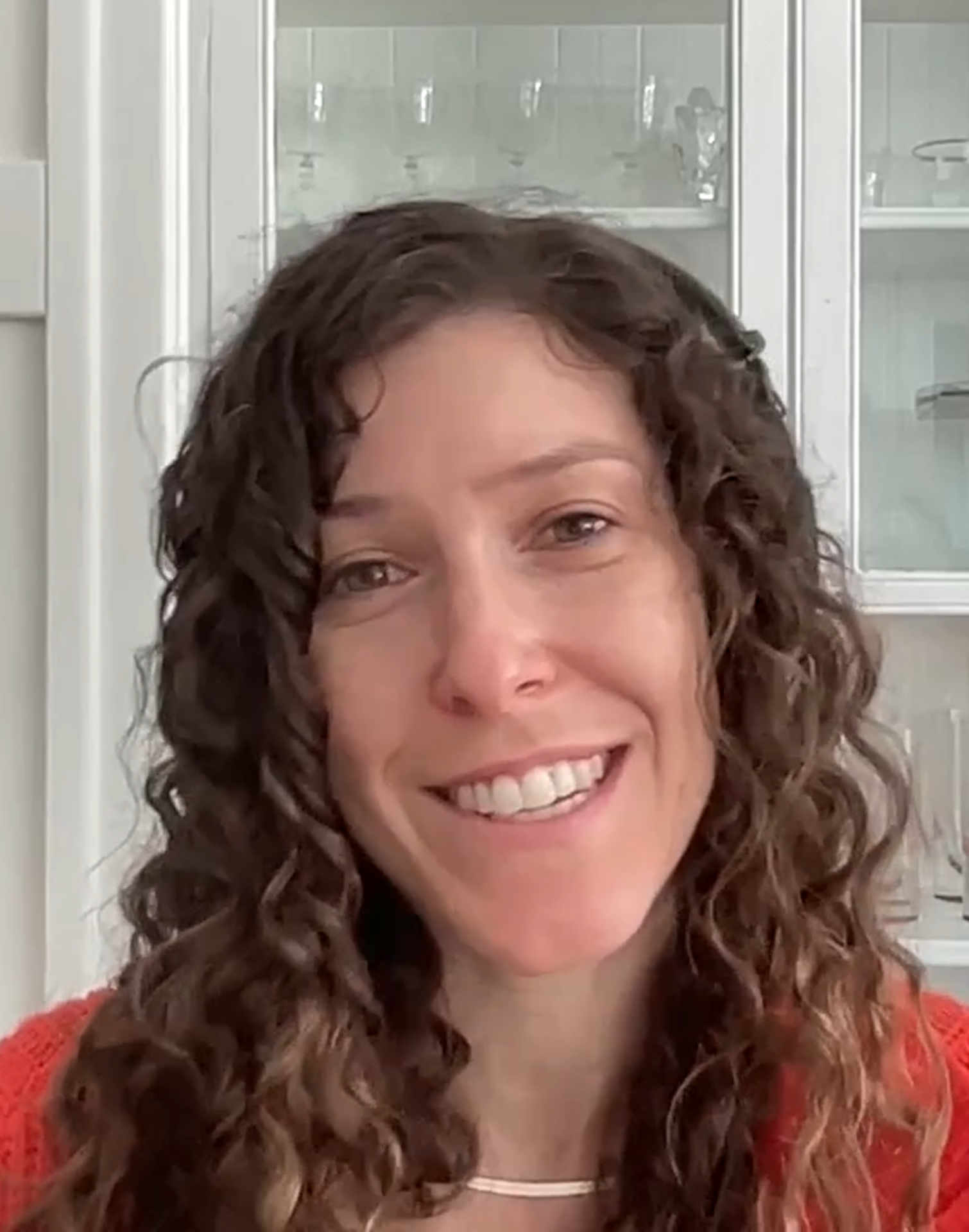 Allie Wollner
Allie Wollner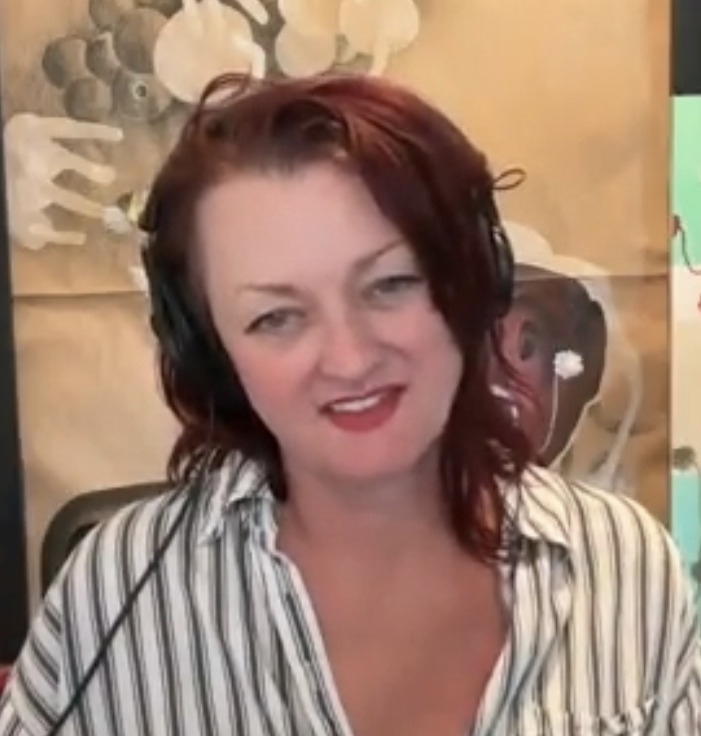 Andie Grace
Andie Grace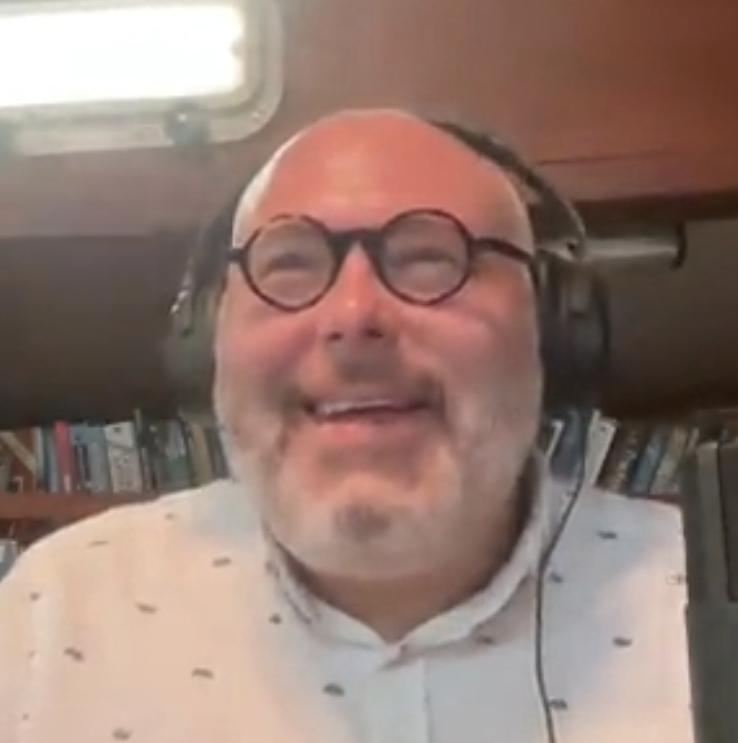 Chad Elish
Chad Elish Deva Temple
Deva Temple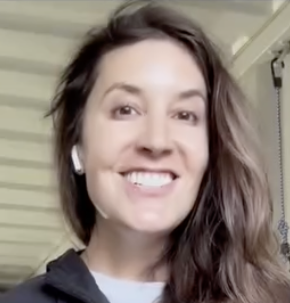 Kate Greenberg
Kate Greenberg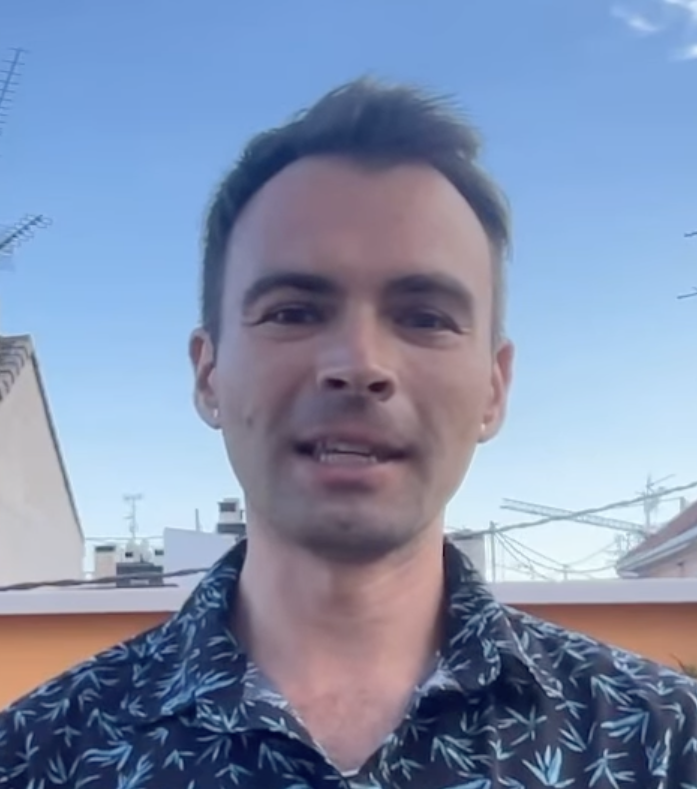 Eric Vicenti
Eric Vicenti Jukka-Pekka Heikkilä
Jukka-Pekka Heikkilä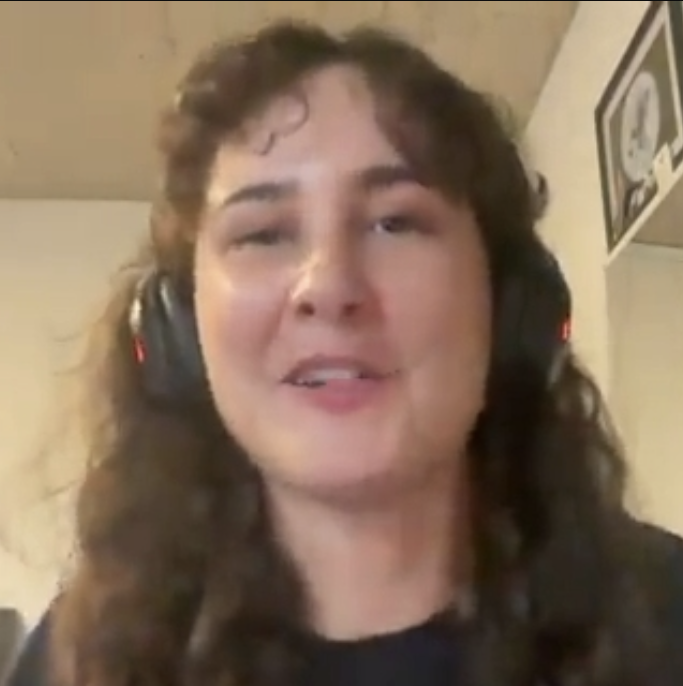 Kiana Kaiser
Kiana Kaiser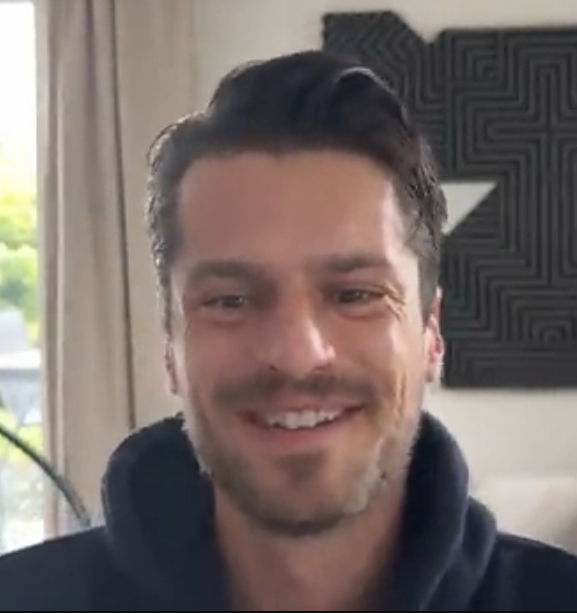 Michael Zeltner
Michael Zeltner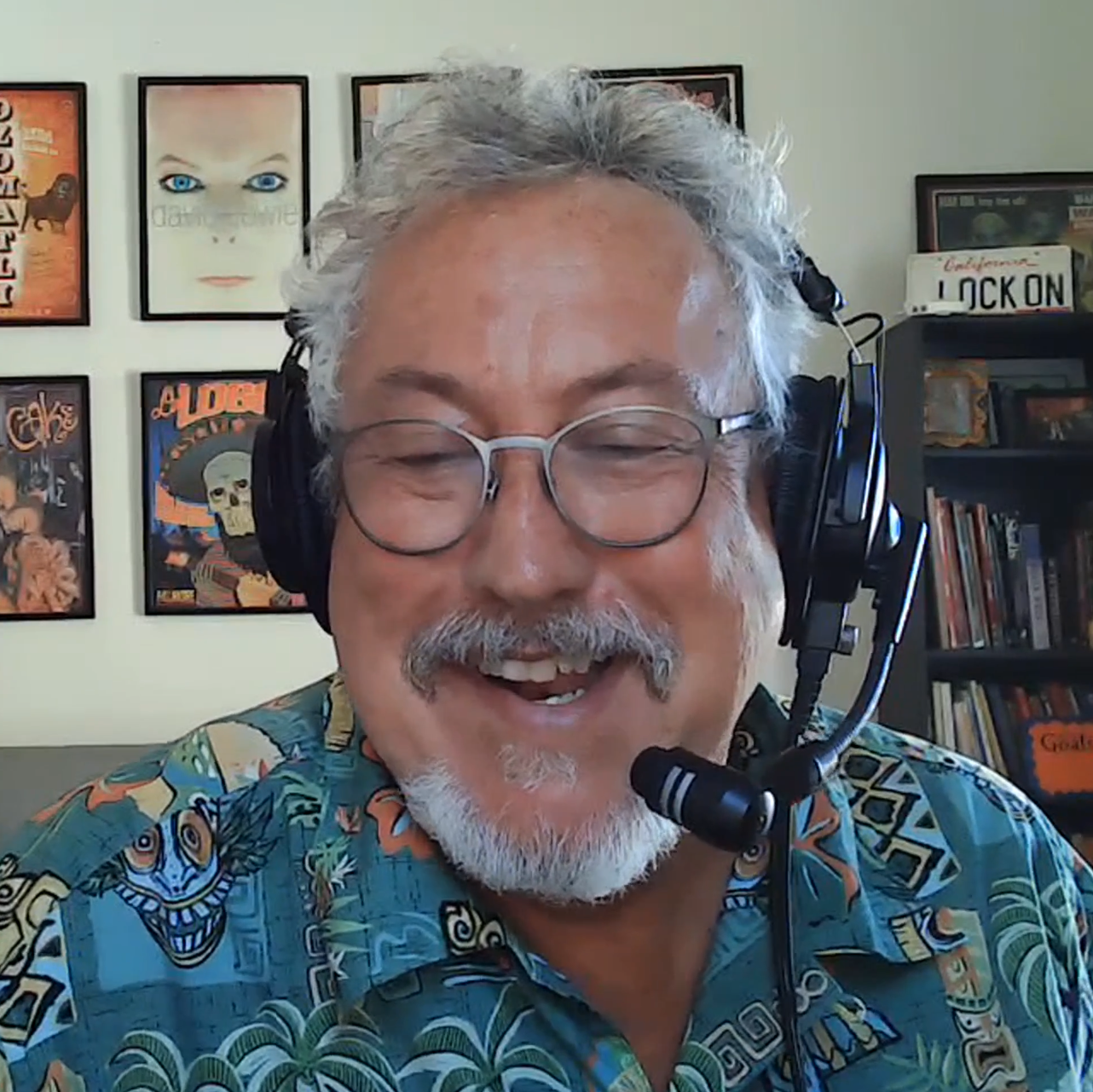 Stuart Mangrum
Stuart Mangrum
